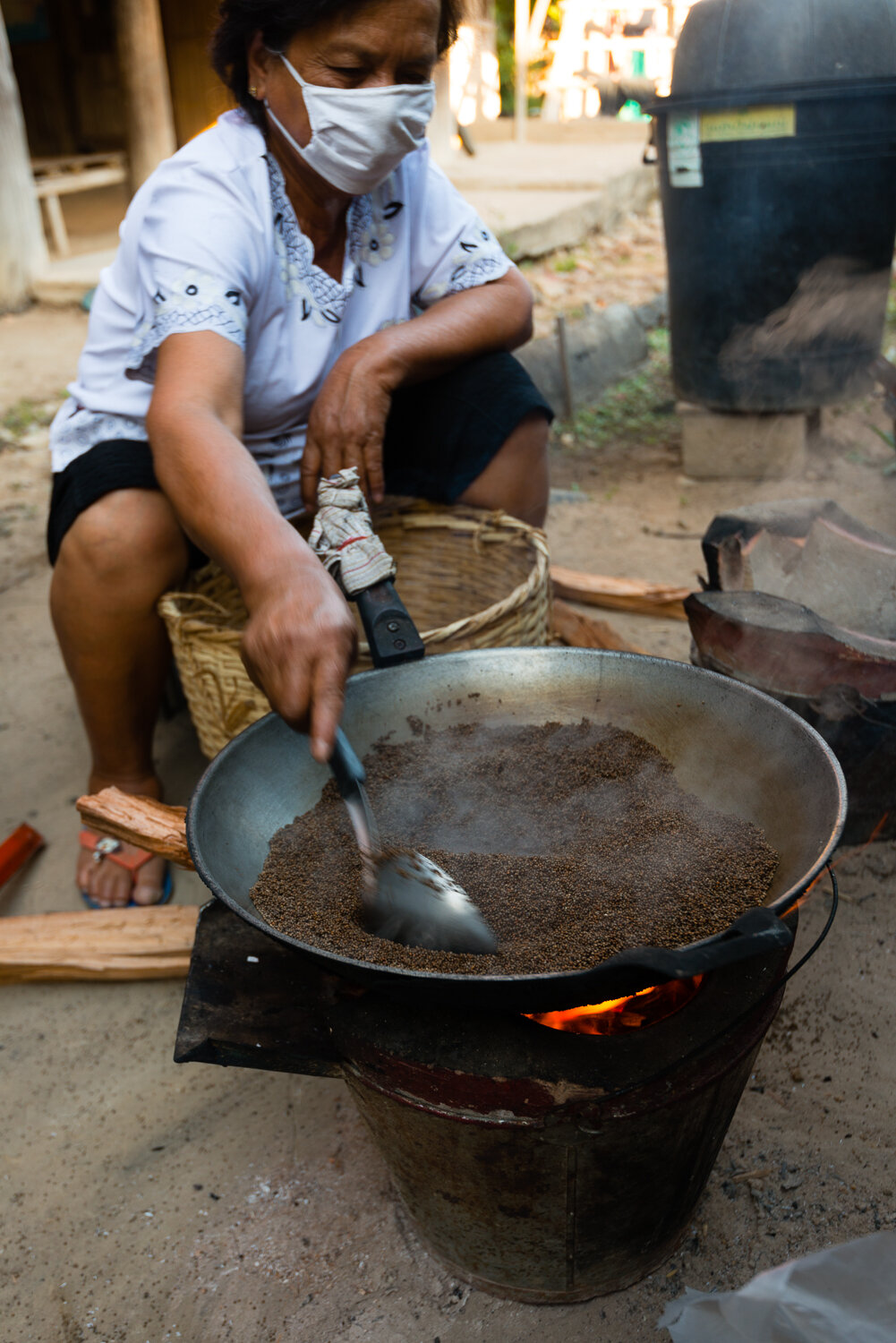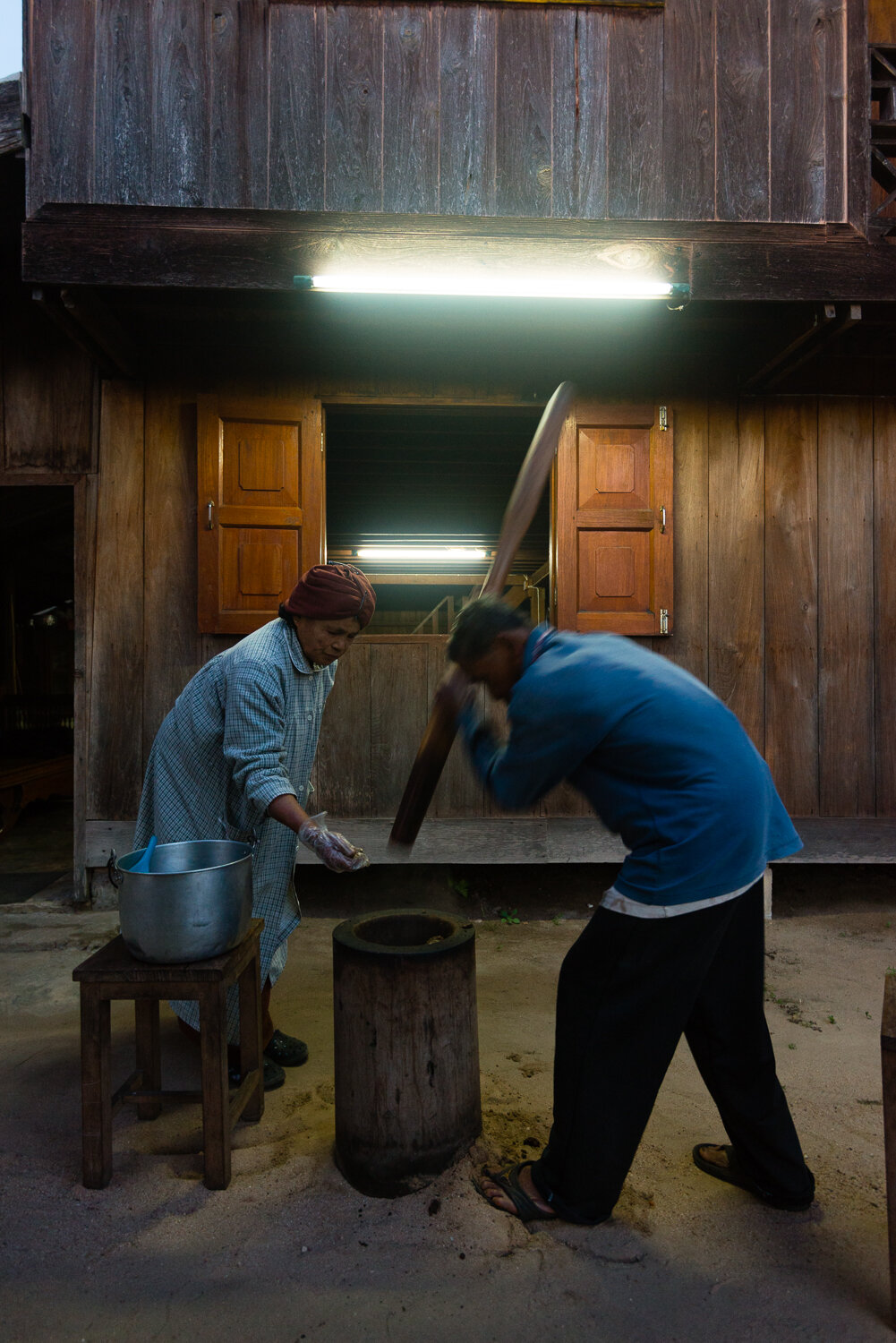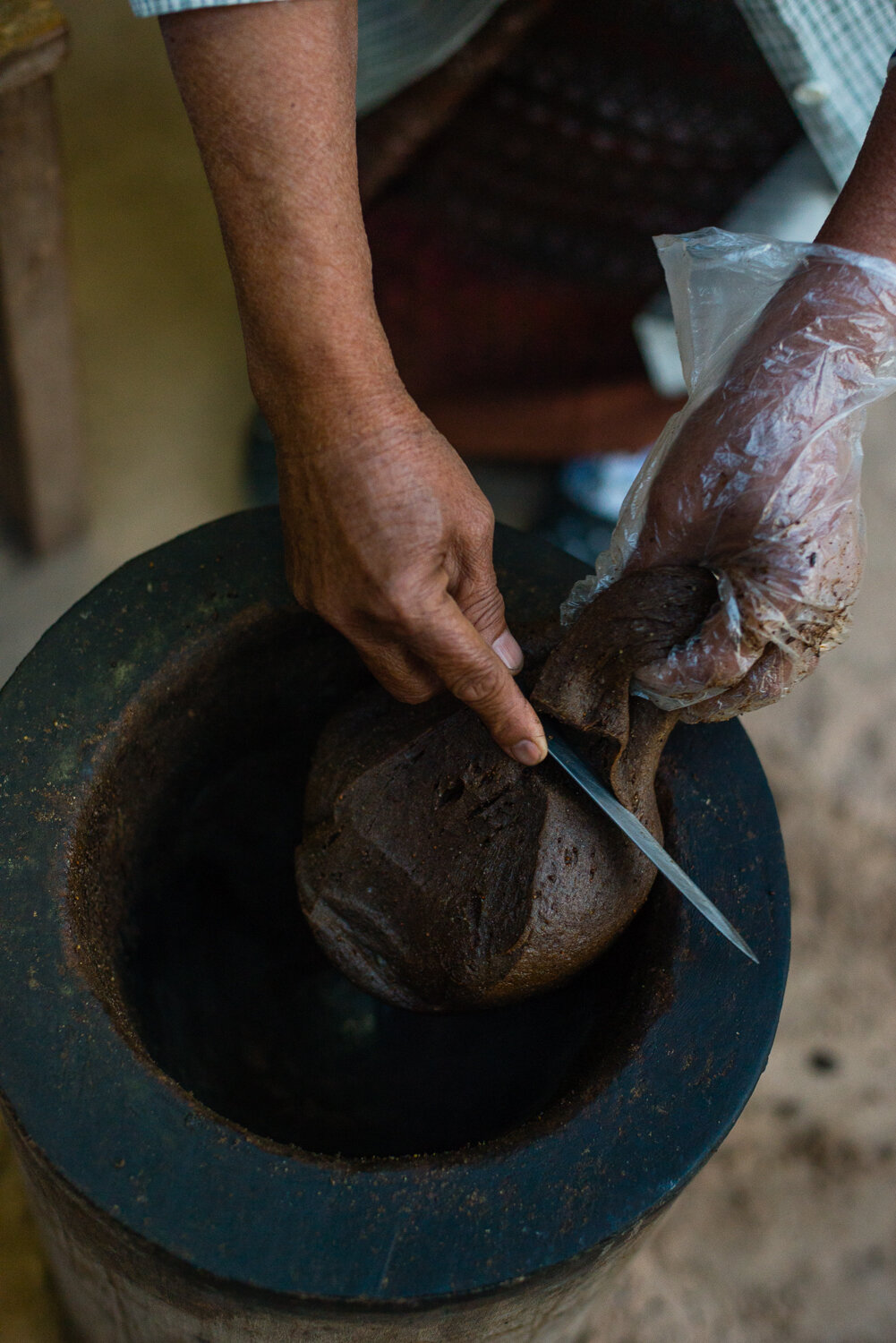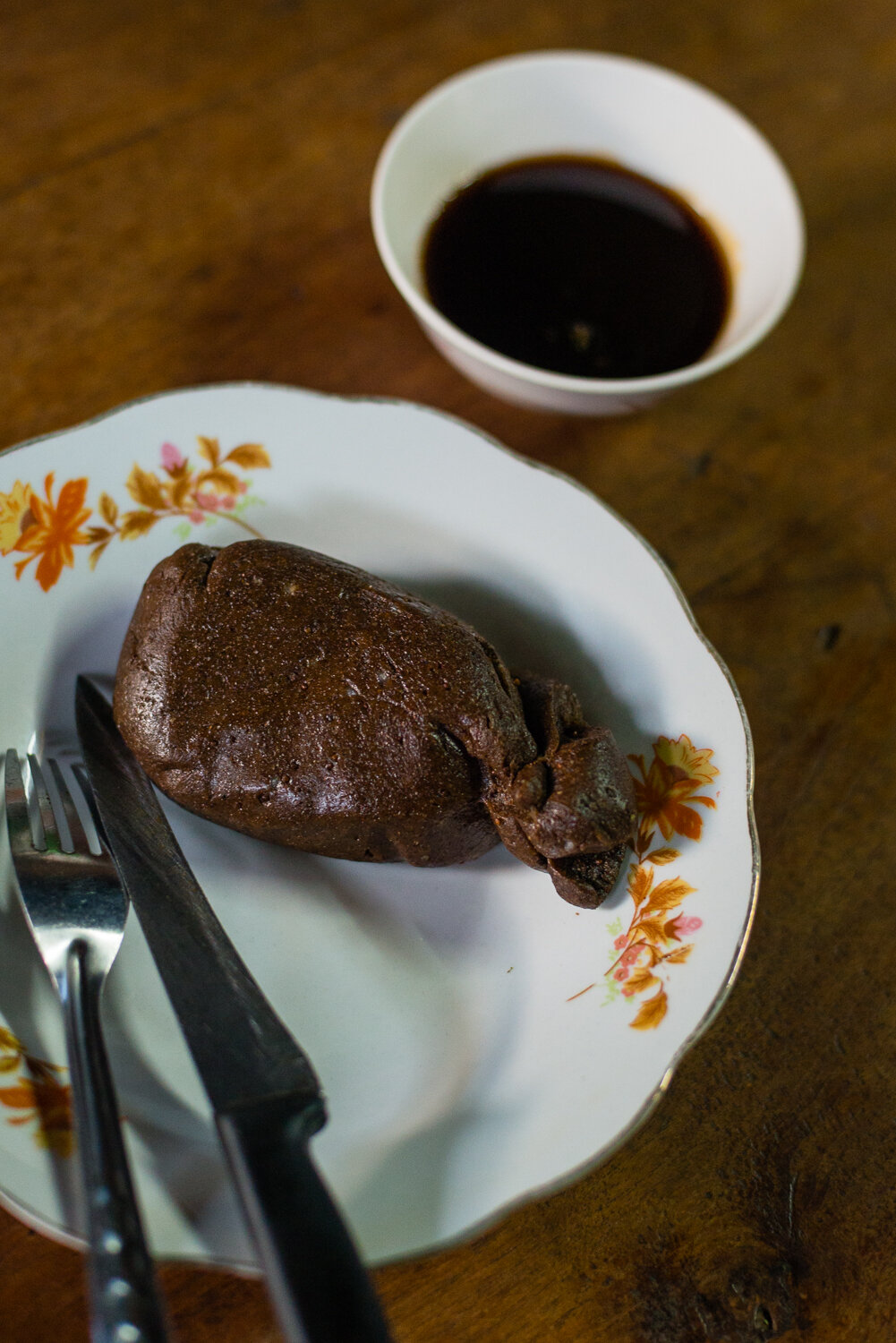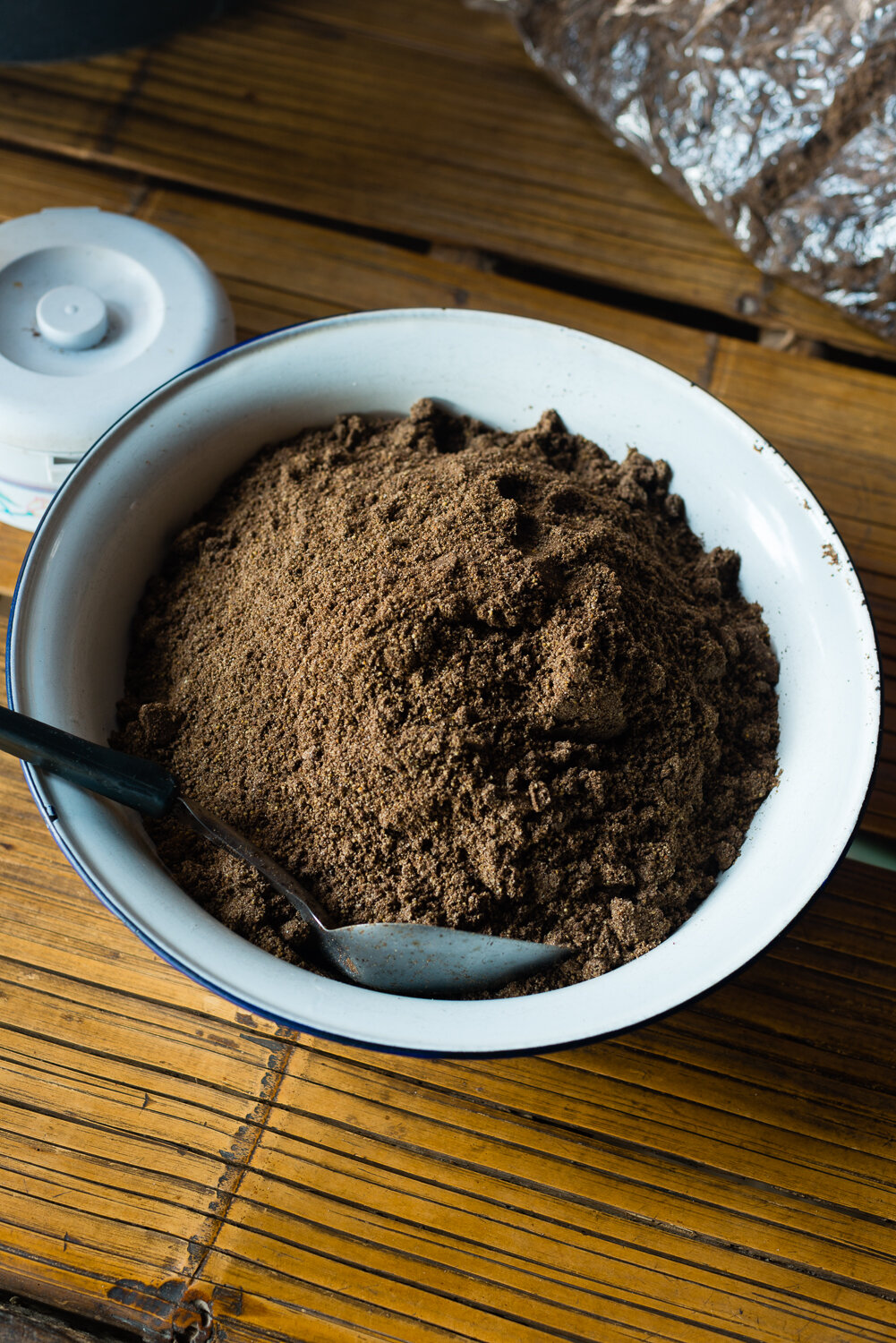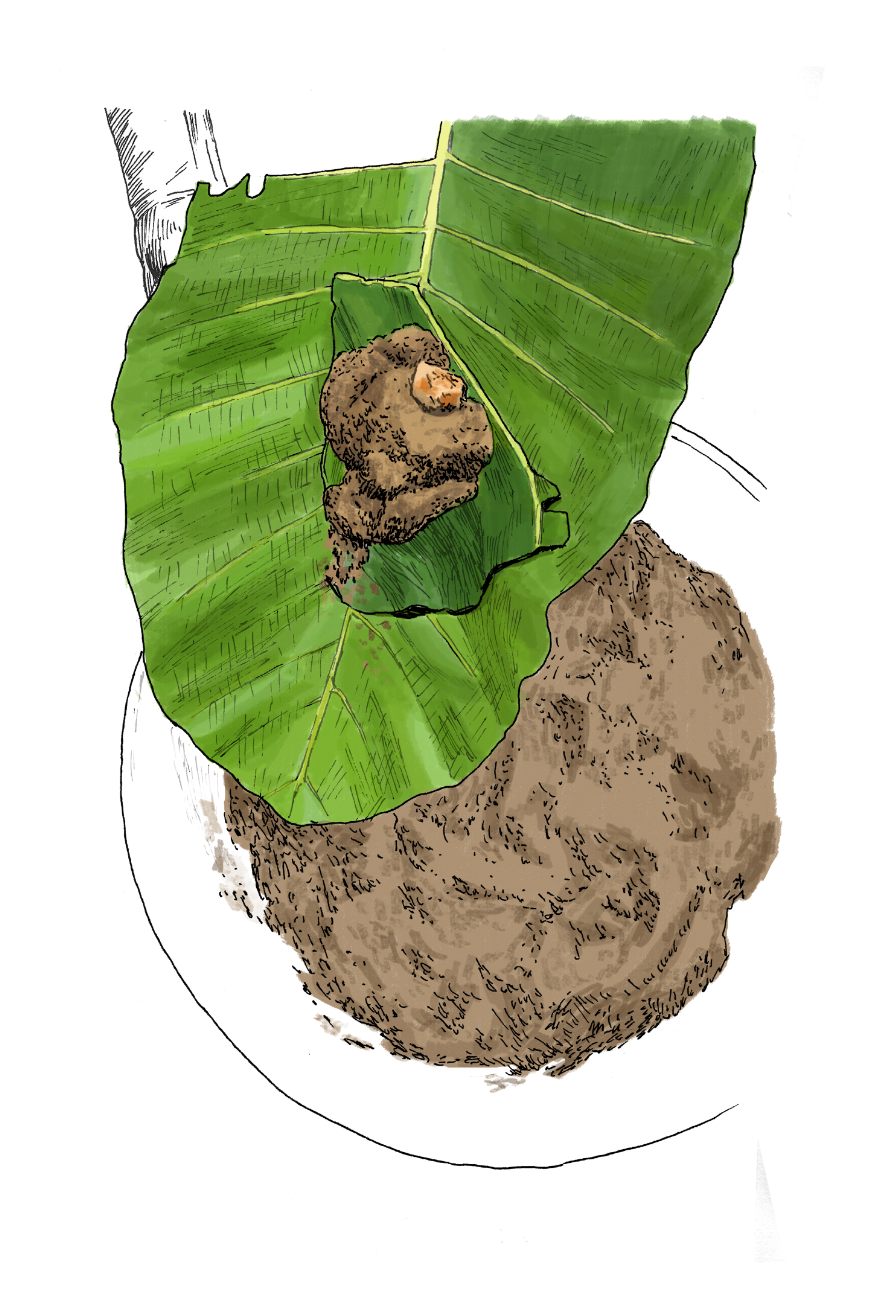Visit rural Mae Hong Son Province during the winter and you’ll note that just about everybody seems to be obsessing over tiny, round, caviar-colored seeds: picking them, roasting them and pounding them. Known in English as perilla and in Thai as ngaa khii mawn, the seeds come from a plant related to shiso, the fragrant leaf used in Japanese cooking. And all the fuss is over khao puk ngaa, a uniquely seasonal sweet snack.
“We grow lots of perilla around here,” explains Miakhin Charoensuk, a resident of the tidy Shan village of Muang Pon, in Mae Hong Son Province. “The seeds are only available in winter, around December.”
To make khao puk ngaa, Miakhin and other Shan inhabitants of Mae Hong Son dry perilla seeds in the sun and dry-roast them until fragrant before grinding them to a coarse powder with salt. Then, along with freshly-steamed sticky rice, they’re tossed into a giant wooden mortar and pestle and pounded to a smooth, soft, gray/purple gray mass – a labor-intensive job that generally requires two people.
“I make 30 to 40 kilograms of khao puk ngaa every day to sell at the morning market,” Miakhin tells me, adding that this task requires her to wake up at 1:30am. “If there’s a festival or funeral, I’m often asked to make more.”
The snack can be eaten as-is or served as a ball or thick pancake dipped in additional ground perilla seeds and encasing a cube of raw sugarcane sugar – the latter a tender, toasty mass with a sweet crunch. Or, if you’re lucky enough to stay at Miakhin’s house as I was, her husband will cut the pounded rice into a thick slice and grill it over coals until it puffs up and forms a crispy shell with a soft interior. You’ll be invited to dip the still-warm khao puk ngaa in melted raw sugarcane, resulting a snack that’s hearty, crispy, smoky and pleasantly bittersweet – ideal on a chilly winter, Mae Hong Son morning.












